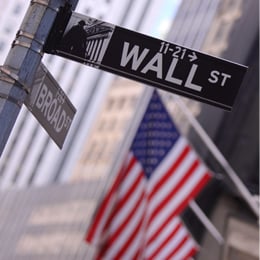 It’s the most wonderful time of the year!
It’s the most wonderful time of the year!
I suspect many of you are as tired of hearing that as I am. I love the holiday season, but the endless repetition of carols can get to you after a while. (In my case, I attribute it to high school jobs working in a department store. By the time I left for the day, I wanted to go after Frosty with an icicle.)
Market could be wrapped up with a 20K bow
Be that as it may, it truly has been a wonderful time for the stock market. With the S&P 500 up more than 3 percent in December—and still close to all-time highs—the post-election rally has morphed into a Santa Claus rally without missing a beat.
Not only that, we’re still flirting with Dow 20K. As I wrote the other day, major milestones like this first act as a ceiling, but if there’s enough energy to move through them convincingly, they then tend to act as a floor. In other words, if we can break through Dow 20K, future gains are likely. With end-of-year buying by institutional investors continuing to drive up markets—and both retail investor and economic sentiment continuing to improve—there’s certainly support for an extended upward move.
But what would the Grinch say?
Me being me, of course, the question now is, How might this go wrong? What are we missing here? In fact, the case for further market merriment looks reasonably solid.
Fundamentals strong. Corporate earnings recently returned to growth after more than a year of decline. That growth should continue and may even accelerate as the economy improves. The energy sector (the primary driver of the declines) is now recovering as oil prices rise, which should provide an additional tailwind. Corporate tax reform, if it happens, should add materially to earnings growth. There are a lot of positives that could help the fundamentals.
Sentiment improving. The actual facts of the economy (employment, spending, housing, and so forth) have been much better than the perception of them. If perception catches up with reality—and there are signs that it is—expect even faster growth. We are closing in on a virtuous cycle that hasn't been seen since the mid-2000s.
Still, risks remain. In the short term, of course, a pullback is quite possible. You can make a good argument that markets have gotten a bit ahead of themselves, and a reassessment after the end of the year would be reasonable, based on history. Fear may also set back in when the usual, unavoidable problems show up in 2017. Politics has not gone away, nor has the rest of the world, where China’s economy and European politics are two of the largest risks. Here in the U.S., it’s yet to be seen whether the Trump administration and Congress will be able to work together.
As we saw in 2016, there are many ways to snatch defeat from the jaws of victory. Given the scale of the positive trends, however, and the continuing position of the U.S. as the world’s strongest economy and most robust political system, derailing the current recovery would be difficult.
Let’s face it. Even though we haven’t been particularly good this year, Santa is likely to show up anyway.


 Print
Print


